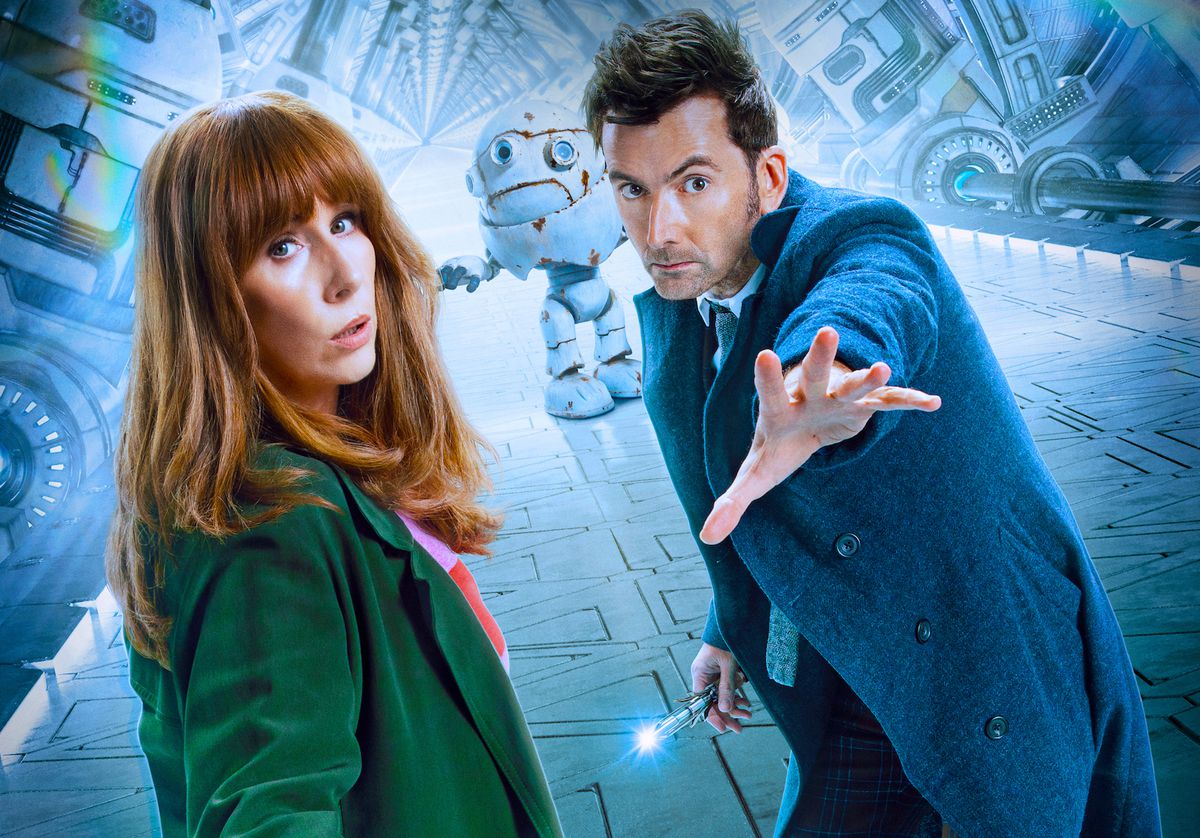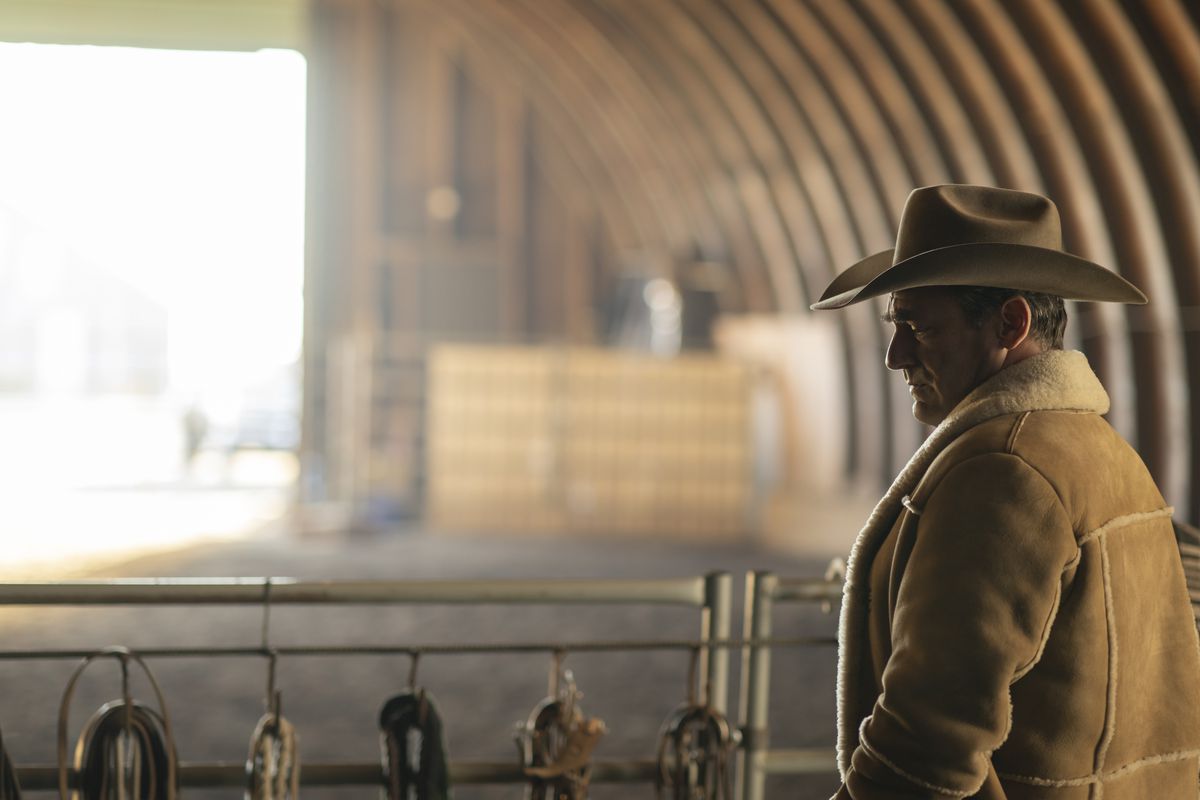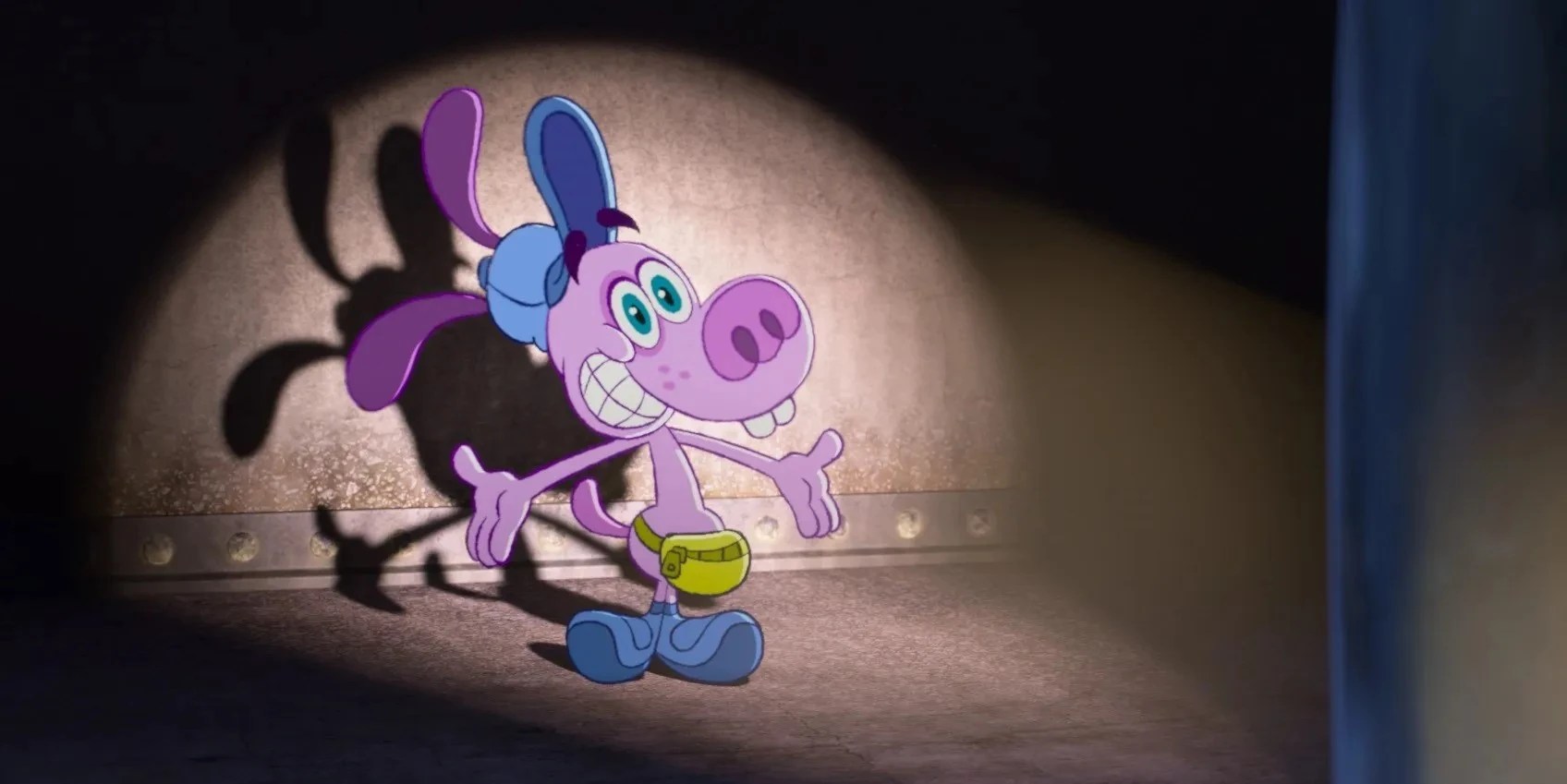This interview with Animal Kingdom director Thomas Cailley was originally published in conjunction with the movie’s U.S. theatrical release. It has been updated and republished for the movie’s Hulu debut.
In the French sci-fi film The Animal Kingdom, the world is changing and humans are changing with it. A mutation begins transforming humans into animal hybrids, creating a variety of bird-humans, insect-humans, mammal-humans, and many other new types of beings. Caught in the middle of this upheaval are a divided family — the mother, in the middle of mutation, has gone missing from a medical transport, which leaves the father and son desperately searching for her. The fantastic movie is now available for digital rental, and streaming on Hulu, after originally screening at Cannes and other film festivals in 2023.
The creature design in The Animal Kingdom is a perfect example of how practical and digital effects can work in harmony to augment each other, building an effect unachievable by either alone. Director Thomas Cailley and his team used a blend of various practical effects (suits, makeup, animatronics) and digital effects to create some of the most evocative and original designs in years, like a scaly pangolin-human or a chameleon-human who can blend in with the environment.
But at the heart of the movie is the moving relationship between father and son. Romain Duris (Aramis in France’s latest blockbuster adaptation of The Three Musketeers) is incredibly moving in his portrayal of the father, François, bringing out his fear about losing his beloved family, and the deep care he has for them no matter the circumstances. Paul Kircher’s performance as his son, Émile, is transcendent, especially as the teenager starts to go through some unexpected changes, evolving every element of his physical performance while still retaining the moody soul of a troubled teen. Together, they bring a complex relationship to life in a hectic world.
Fascinating and endlessly discussable, especially in the questions it poses about humanity and how we treat those different from us, The Animal Kingdom depicts its changing world with great care. The presence of these hybrid people causes disparate reactions from the humans in the film — compassion, fear, anger, disgust. Some people are deeply concerned with how the hybrid people are treated and advocate for coexisting, while others form militias and advocate for violence. It all results in a very grounded depiction of how our society reacts to people that are otherized, in all of its shades.
:no_upscale()/cdn.vox-cdn.com/uploads/chorus_asset/file/25336159/4.jpg)
The movie’s central premise is one that invites many different allegorical readings: Is it about race? Is it about disability? Is it about gender? Is it about xenophobia? The vast span of interpretations is something Cailley told Polygon he appreciates about audience reactions so far, but the director insists there’s no right answer. It all combines for one of the most intriguing movies of the year, and one of the best original works of science fiction in recent memory. Ahead of the release, Polygon spoke to Cailley about the movie’s complicated morality, gorgeous effects, and his favorite creature designs with the help of a translator, Nicholas Elliot.
Polygon: What was the genesis for the idea of the project, and how did you first get involved?
Thomas Cailley: Originally, I wanted to tell a father-son story, and I wanted there to be a fantasy element, something that would shift the narrative, take it elsewhere. And by chance, I met a young woman [Pauline Munier] who was a screenwriter who was still in school, actually for screenwriting at the time. And she had written a story about hybridization between animal and humans, and I found it very interesting. And so we started to work on a project together. This was in 2019, four years ago.
What was your relationship like with the sci-fi genre before making this film?
Well, my first film [Love at First Fight] progressively slips towards some kind of sci-fi or anticipation element. It’s the story of a young woman who’s persuaded, who’s convinced that the world is going to end, and at the end of the film, that actually does happen. And that’s something that we had to show, we had to stage it. Initially that hadn’t been planned when I started writing my first feature. And by doing it, I discovered the pleasure of inventing these kinds of images. And so that’s something I wanted to return to with another film, to return to this freedom that you get in working with genre that allows you to go deeper into the belief in characters.
:no_upscale()/cdn.vox-cdn.com/uploads/chorus_asset/file/25336161/1.jpg)
What was your philosophy and approach to designing the creatures in the film?
The concept of the mutation is it starts from the human body to move towards something different, towards another frontier, a new horizon, and we tried to keep it realistic and organic. In most films that deal with mutation there’s something magical or accelerated about the mutation — you transform because there’s a full moon outside, or you slip on a costume and then you’re half-man, half-animal. Here we wanted something much more progressive that in a way would be like a disease, and that was the hardest thing to do.
First meetings that we had to prepare the film, the thing that was really terrifying is that it seemed like we would have to do 100% CGI, 100% digital effects, and I absolutely did not want that. So what we tried to do is combine every type of effect possible. In most scenes, you’re dealing with real actors, there’s a real body in front of the camera all the time. And we worked very hard on doing things with makeup, prosthetics, animatronics, i.e., robots. And when we really couldn’t do it, then we used CGI. So there’s a hybridization of technology that you see in every shot of the film. The cocktail that we’re using is always different. And what’s really interesting about having this cocktail is one, it’s more real, there’s no green screen, no motion capture; and secondly, because the mix is always different, of technologies, the spectator’s eye never has a chance to get used to what he or she is seeing and to understand what is happening, in terms of technology.
Just to close on that since you asked about the philosophy, I started working with a comic book author. And then I worked with people who are referred to as character designers. When I started the writing at the very beginning, the idea was that the mutation was from human beings to animals as we see them in nature, but the more I moved forward with the shoot, and as I met the actors who are going to play these characters, I found that it would be much more interesting to have each character invent the character that he or she was going to embody. And so we moved towards these atypical original forms that are, in fact, not exactly what we find in nature. And so it’s not so much a return to nature as a discovery of a new humanity, of a new frontier in evolution.
That’s very interesting, especially the relationship between the hybridization of techniques and the hybridization of species in the film. Are there any of the creature designs that you’re particularly fond of? For me, perhaps the most striking shot of the film is the one with the person who has a reptilian skin and you see their shoulder blades moving as they slither through the grass.
Interesting that you mentioned the reptile because that’s also one of my favorite creatures. And it’s one that’s quite representative of our work. You know, this is a character that you never see in its entirety. But we do have that shot of his back. And the idea for his back came from a contemporary dancer that I discovered who has very interesting bones or skeletal structure and muscles. And when this dancer goes flat on the floor, his shoulder blades literally stand up, creating a very interesting relief on his back, which is disturbing because it’s human, but it’s also something else. So in the case of this actor who played the reptile, we literally put a new skin on his back and we asked him to move forward like a reptile. And what you see of his back and his skeletal structure really is part human and part animal. I also really liked the squid woman in the supermarket, who incidentally is also a dancer.
:no_upscale()/cdn.vox-cdn.com/uploads/chorus_asset/file/25336162/3.jpg)
In terms of working with the actors to design the creatures, were there any “Eureka!” moments that felt like, Yes, this person really understood what I wanted here?
There was a moment in the film. It’s the moment when François, Emil’s father, is fighting a creature behind the restaurant. It’s the human-walrus creature. And that fight is interrupted by François’ colleague. She hits the creature with a canoe paddle. And at that moment, the creature and the woman exchange glances. And it was really such a beautiful moment, I thought. The actor inside that costume couldn’t see at all, because of the costume. But he had understood something about the physical movement necessary and time really came to a stop. There’s a combination in that moment that’s very poetic of the actress’s understanding of the scene, the blind actor’s understanding of the scene, and of what three or four people who are controlling the animatronics, because there’s like 1,000 motors in the head of that creature, what they do, and that makes this fight scene turn into an encounter between two beings. And so that moment really blew me away because I felt a whole team coming together and really being aligned.
There are a lot of themes in the movie that you can read as allegory. Were there any contemporary topics that you were thinking of specifically?
Of course, there’s a very universal subject in the film, which is the parent-child relationship and the transmission or passing down of things over two generations. That’s the deep subject of the film, what it means to leave something to someone: François, who is passing on a world to his son, Emil. And that’s a question that’s very meaningful to me, because I’m a relatively recent father, and I find this question of what a parent passes down to his or her children really mysterious. Throughout the process of making this film, we tried very hard not to limit the metaphor. I think that what’s interesting about fantasy, when it works, is that anyone can interpret it however they want.
So I was very happy when we started to show this film to audiences to see that many people saw different metaphors in the film. Some people spoke to me about the metaphor of differences, how we accept difference. Some people spoke to me about the migrant crisis in Europe today. Some spoke to me about psychiatry, the situation for psychiatry, in France and Europe. Some spoke about people who are racialized, which is the French term for having a non-centralized racial identity. And others spoke to me about gender transition. I think the power of fantasy, when it works, is that not everything is resolved. You leave room for the spectator.
The Animal Kingdom is streaming on Hulu and is available for digital rental or purchase on Amazon, Vudu, and similar platforms.







